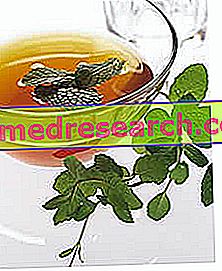
Birch against cellulite
Birch ( Betulla alba, Fam. Betulaceae) is a plant that is used in the treatment of cellulite, mainly in the form of herbal teas.
The parts of the birch used in herbal medicine are the leaves, which contain:
- 3% triterpene saponins, with a hemolytic action;
- Essential oil from 0.05% to 0.1%, containing 25% of betulenol;
- Flavonic glucosides: hyperoside, quercitrin, myrcetin, galactoside, kempferol, quercetin;
- Tannins;
- Ascorbic Acid, Chlorogenic and Caffeic;
- Resins, Methylpentosan, Amari, Betuloretic Acid, Betulaline.
The diuretic effect of birch leaves has been confirmed by pharmacological studies and is mainly attributed to flavonic glycosides and saponins;

BIRCH TISANA AGAINST CELLULITE: use 5 to 10g of birch leaves for a cup of boiling water.
As soon as you pour the leaves and turn off the heat, pour a pinch of baking soda to facilitate the solution of the resin (betuloretic acid) and obtain more complete effects.
DYEING BIRCH MOTHER: 40 drops 3 times a day.
Even the commercially available glycolic fluid extract has astringent and dermo-purifying properties useful for cellulite, therefore it is used alone or in association with other plants (glycolic extracts of ivy, horse chestnut, sea oak).
Birch is well tolerated, however it should not be used by people with heart or kidney failure.
Red vine against cellulite
The red vine ( Vitis vinifera, variety tinctoria; Fam. Vitaceae) is a plant that is used in almost all anti-cellulite infusions.
The leaves are used of the red vine, harvested after the harvest when they have the characteristic red color. This drug is used for the treatment of venous and circulatory diseases, thanks to the main presence of:
- Flavonoids: quercetin, isoquercetin, rutin, kemferol, luteolin;
- Anthocyanins (anthocyanin and leucoantocianic tannins): gallocatecol, catechol, epicatecol gallate, peonodol, malvidol, dolphin dolphins.
The leaves must contain at least 4% of total polyphenols and 0.2% of proanthocyanidins.
The protective action of the red vine is expressed through the function that the proanthocyanidins exert on the stabilization of the capillaries, preventing the increase of the permeability of these very thin blood vessels: the proanthocyanidins stabilize the collagen fibers and the elastin, strengthening in this way the vascular connective tissue matrix.
There are no known side effects associated with the use of red vine leaves in both herbal tea and over-the-counter formulations, so it can be used safely provided the recommended dosage is respected. During pregnancy, lactation, and in the presence of any other pathology, medical advice is always recommended, despite the fact that the red vine represents a safe phytotherapy.
Compound Teas for Cellulite
The quantities shown below are percentages, the important thing is that the indicated proportion is respected in the preparation.
TISANA "ANTICELLULITE": formulation 1
- Vitis vinifera, tinctoria variety, Leaves, 60
- Spirea ulmaria, Summit, 40
One tablespoon of the infusion mixture is used for 10 minutes in a cup of warm water only.
Drink 2 empty cups a day.
TISANA "ANTICELLULITE": formulation 2
- Vitis vinifera, Leaves, 30
- Birch, Leaves, 30
- Common Olmaria, Summit, 10
- Marine oak, Thallus 10
- Strawberry, Leaves, 10
- Verbena odorosa, Leaves, 10
Use a tablespoon of the mixture poured into ½ liter of boiling water.
Add a pinch of sodium bicarbonate; after 10 minutes filter and consume the anti-cellulite herbal tea during the day.



